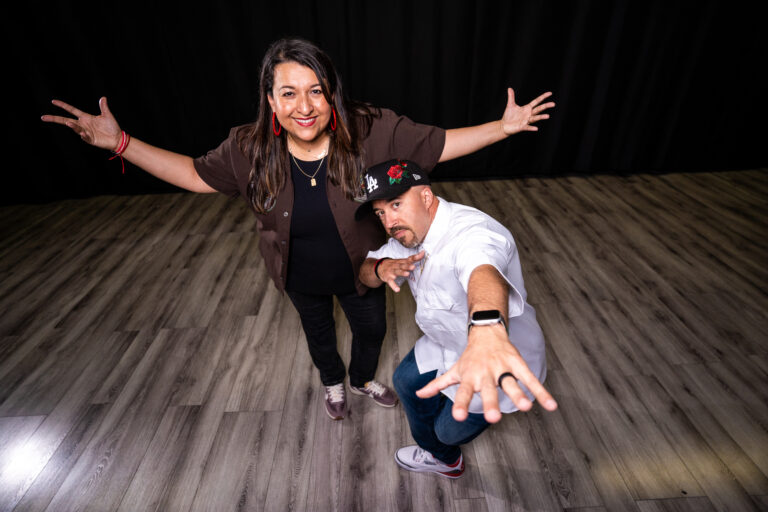At San Francisco Ballet School, Henry Berg’s conditioning program is affectionately known as “rehab.” Dancers take this class when they’re coming back from an injury and building up to their full school or company schedule. Rehab often starts on the floor with non-weight-bearing exercises and gradually progresses through a classical ballet barre and center. “I try to get them back as fast as possible,” says Berg, “but they have to work slowly and correctly.”
Not all schools can offer a separate rehabilitation class for injured students. More likely, dancers show up for class after having some time off for injury and are anxious to go full speed ahead. But teachers need to keep a close eye on them and make sure they don’t do too much too fast. Watch for warning signs of overuse, practice good communication and encourage dancers to complete work outside the studio to ensure they make a full recovery.
Encourage Appropriate Activity
Unless dancers are in a cast or suffering from a severe back or neck problem, they can speed up their recovery time by keeping themselves conditioned. “They can’t just wait until the injury gets well,” says Berg. “Floor work—non-weight-bearing exercises—will help them start using muscles correctly. Then they won’t have to think as much about their torsos when they stand up for barre.” Students should focus on the injured part right away to start regaining strength and mobility.
Cardiovascular conditioning is also important for injury prevention. “It helps decrease injury rates,” says Dr. Judith Peterson, who consults for Pennsylvania Ballet. “Dancers have improved blood flow, and blood flow is helpful in healing.” Riding a bike, walking, rowing or using an elliptical machine will develop and maintain cardio endurance and prevent fatigue in the studio. Visualization can also help speed recovery. “Have them work through a jump in their head,” says Peterson. “This mental preparation will improve brain and muscle connections.”
Supervise Closely
When dancers return to class, they should maintain proper alignment and work thoughtfully. “The major thing is for them to stand up correctly,” says Berg. “You have to keep an eye out for things like rolling arches and too much opening of the hip.” Encourage them to move slowly and modify exercises until they are strong enough to progress.
If a dancer’s technique is strong but she still has pain or keeps reinjuring the same spot, there could be an underlying problem, such as low bone density or poor nutrition. “Some dancers are more susceptible to injury,” says Peterson. “There might be a metabolic issue, or maybe the dancer has normal bone health but just keeps overdoing it.” If recovery seems to be moving in the wrong direction, have them revisit a doctor or physical therapist to see if they need more-specialized treatment.
Be on Alert for Red Flags
Dancers might insist they’re ready to go and hide the fact that they’re still hurting. Teachers should look to see if these students have slower response times, more landing errors and less endurance than usual. Other red flags could be swelling or a dancer’s reluctance to do certain kinds of choreography. “Dance is physical, and there are going to be issues,” says Peterson. “But if a dancer is icing a knee six days out of seven, that’s a little different.”
Henry Berg leads San Francisco Ballet School students in class. Photo by Erik Tomasson, courtesy of San Francisco Ballet
Encourage students to share any concerns they might have regarding discomfort or pain. “If discomfort does not lessen or continues to get worse, the dancer is not ready to be dancing at the current level,” says Susan Kinney, director of physical therapy at The Boston Conservatory. “Rest and repair time is necessary for building strength and endurance.” If a dancer needs to sit out for more than a few days, it’s crucial for the teacher to communicate with the dance medicine clinician and come up with a plan that fits the student’s specific needs.
Create an Individual Plan
Physical therapist Susan Kinney recommends dancers follow these basic guidelines that she developed with Michael Owen, dance director at the Walnut Hill School for the Arts in Natick, Massachusetts. Devote a one- to two-week period to each step before progressing to the next.
- Begin with a modified barre that is one-third the duration and intensity of class.
- Once a full barre is discomfort-free, have the student participate with full barre and modified center work.
- Once a full barre and full center work are achieved, discomfort-free, the student can add petit allégro.
- Once a full barre, full center work and petit allégro are all pain-free, the student can add grand allégro.
Once a full barre, full center work and all jumps are comfortable, the student can add pointe work.
Try this exercise from Henry Berg’s conditioning class at San Francisco Ballet to regain muscle tone and maintain proper alignment without bearing weight:
Lie on your stomach with your legs in a wide second position, flexing your feet very hard. Keep abdominals engaged and feet slightly off the floor. Gradually draw in your legs to first position. Repeat four times.




